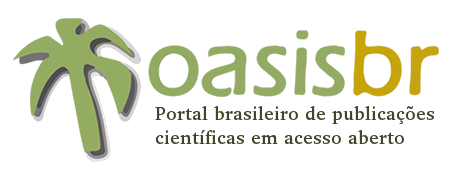Submissions
Submission Preparation Checklist
As part of the submission process, authors are required to check off their submission's compliance with all of the following items, and submissions may be returned to authors that do not adhere to these guidelines.-
The manuscript is original and inedit, and is not being evaluated by other Journal; Otherwise, please justify in "Comments to Editor".
-
The manuscript file is formated as MS Word, OpenOffice or RTF.
-
URLs are informed when possible in the text.
-
The file is formated with space 1,5, font 12 pts; italic indeed underline text, (except URLs); pictures ad/or tables are inserted in the body, not at the end nor attached.
-
The file follows the guidelines and bibliographic formats described in Author Guidelines were satisfied.
-
In case of submission to a section peer reviewed (eg. Articles), the instructions available in Ensuring a Blind Peer Review were satisfied.
Articles
Os artigos submetidos para esta seção devem ser inéditos e serem, preferencialmente, resultados de pesquisas ou revisões acadêmicas relacionados aos projetos de pesquisa dos autores, estar relacionados com a área de abrangência da revista (Filosofia), ou de áreas interdisciplinares, ou ainda versarem sobre uma livre revisão do estado da arte de temas considerados relevantes a partir das áreas de pesquisas dos autores, em particular.
Submissão: ver chamadas especiais da revista.
Forma de apresentação: ver Diretrizes para Autores para instruções precisas.
Entrevistas
Seção destinada à publicação de entrevistas com pesquisadores de destaque na área acadêmica da revista, sobre temas de interesse para a comunidade filosófica que versem sobre questões da atualidade ou de pertinência histórica, ou considerados relevantes para a pesquisa filosófica em geral. Ela visa dar espaço a um debate profícuo e atualizado que, por vezes, são difíceis de serem sistematizados em forma de artigo ou ensaio.
Apresentação: As entrevistas devem conter um resumo em português e inglês, palavras-chave e keywords, além de uma apresentação do auto/temar da entrevista. O texto deverá conter a mesma formatação para artigos, descritos nas Diretrizes para autores.
Translations
Seção destinada à tradução de textos inéditos na área acadêmica da revista, ou considerados relevantes para a pesquisa filosófica em geral. Ela visa dar um suporte à ausência de traduções sistemáticas de textos de uso corrente em outras línguas que, por motivos diversos, tardam em aparecer traduzidos para a língua portuguesa. As traduções devem estar sempre 1)acompanhadas de seus originais e de 2)uma autorização expressa, em PDF, do autor/editora detentor do copyright, quando for o caso. O texto deverá conter a mesma formatação para artigos, descritos nas Diretrizes para autores, Item 1.Formatação. Deve conter, no máximo, 30 páginas. Casos extras podem ser analisados. O texto será apreciado por um revisor do conselho editorial conhecedor da língua traduzida.
Forma de apresentação: Requer um resumo/comentário breve (de até 100 palavras e 3 palavras-chaves) e suas traduções para o inglês.
Reviews
Tem por objetivo a apresentação crítica de obras relevantes na área de filosofia. A obra resenhada deve ter sido publicada há, no máximo, 5 anos, preferivelmente. Excessões serão consideradas, e podem ser justificadas pela revelância da obra. Deve apresentar, além de uma descrição regular da obra, mas não necessariamente, uma intenção crítica com as posições defendidas pelo autor da obra resenhada.
Forma de apresentação: O texto deve um rtítulo, um resumo/comentário breve (de até 100 palavras e de 3 a 5 palavras-chaves) e suas traduções para o inglês (título, resumo e palavras-chave).
Copyright Notice
Journal general policy
1.This journal works under a Creative Commons License aplied to online journals. That icence can be read in the following link: Creative Commons Attribution 4.0 International (CC BY 4.0).
2.Accordingly to this License, a)the journal declares that authors hold the copyright of their articles without restrictions, and they can archieve them as post-print elsewhere. b)the journal allow the author(s) to retain publishing rights without restrictions.
Metadata Policy for information describing items in the repository
1. Anyone may access the metadata free of charge at anytime.
2.The metadata may be re-used in any medium without prior permission, even commercial purposes provided the OAI Identifier or a link to the original metadata record are given, under the terms of a CC BY license refered for the Journal.
Privacy Statement
We warranty that users data will be used only for private use of this journal, and no one other way of use is allowed.






































